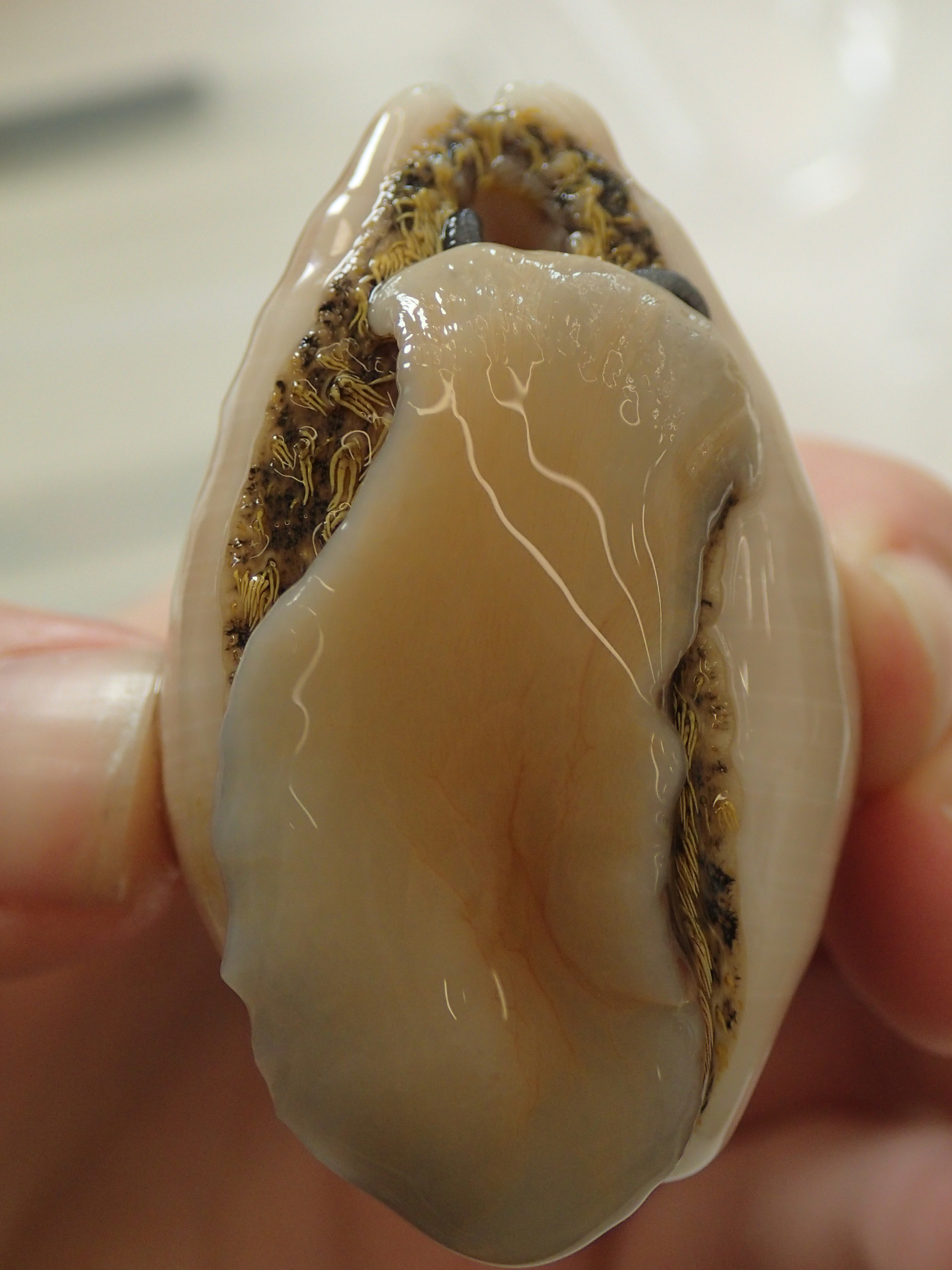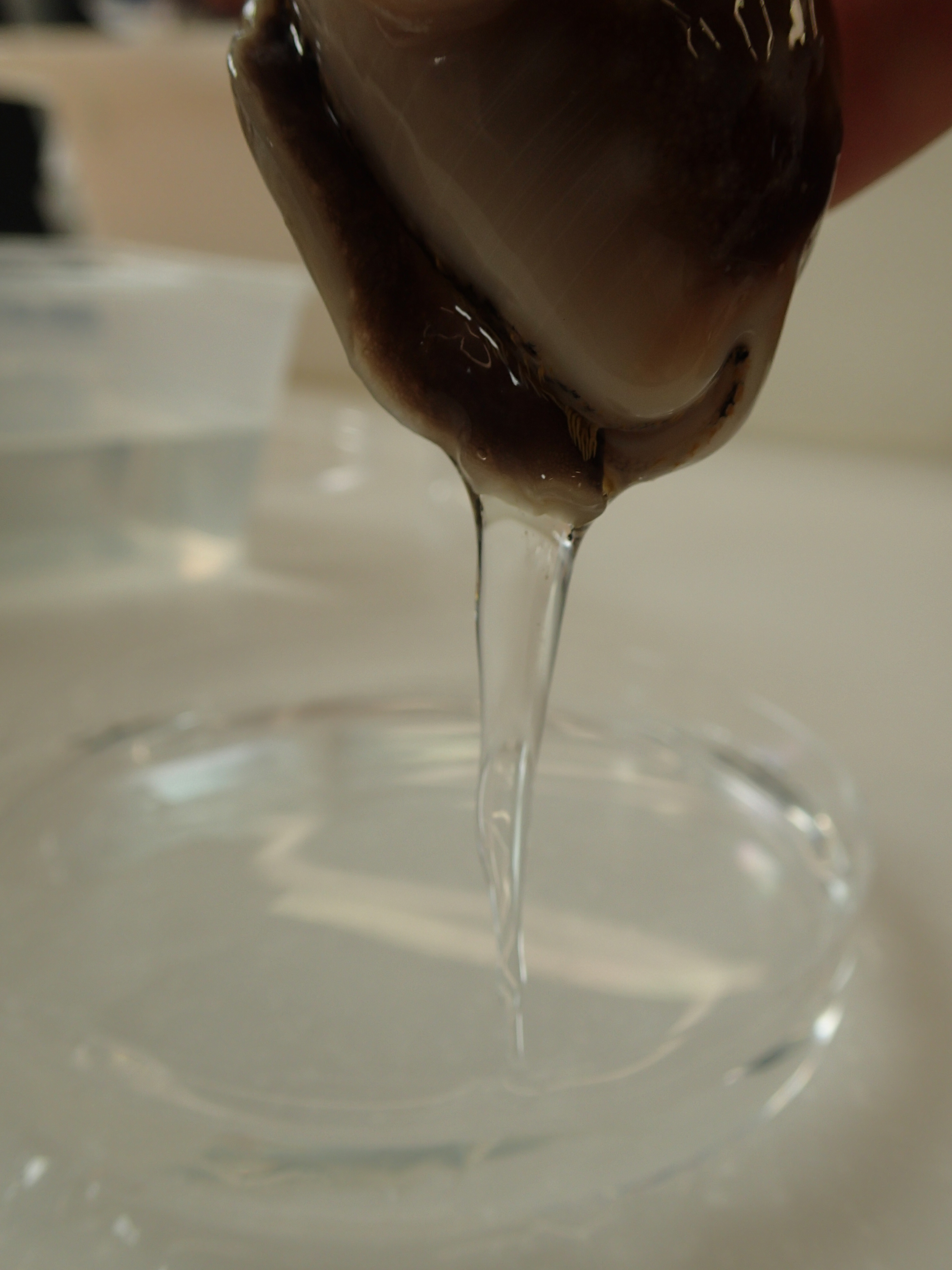Locomotion
The foot plays a major role in the locomotion of all gastropods (Ruppert et. al, 2004). The surface of the sole is broad and flat, and can be adapted for locomotion over varying substrates (Burgess, 1985). The movement over substrate occurs via muscular waves that move posterior to anterior, extending throughout the entire width of the foot (Burgess, 1985). These are known as monotaxic direct waves that move in the same direction in which the animal is moving (Ruppert et. al, 2004). These waves involve the contraction of longitudinal and dorsoventral musculature beginning at the posterior end of the foot (Ruppert et. al, 2004).
The foot is heavily ciliated, and contains secretory gland cells that secrete gelatinous mucus (Ruppert et. al, 2004). The sole is always firmly anchored to the substratum by this mucus (Ruppert et. al, 2004). However, during a wave this mucus is liquefied to allow the foot to slide forward, assisting in propulsion (Ruppert et. al, 2004). Some rely on cilia for this propulsion, however most rely on muscles (Ruppert et. al, 2004).
 
The foot in L. vitellus. Image by Chelsea Waters. Gelatinous mucus release. Image by Chelsea Waters. |